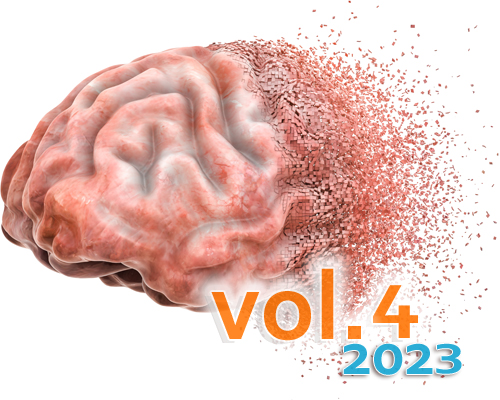Pathological perspectives in pilocytic astrocytomas: Extent of resection as the sole critical factor for recurrence-free survival, and the challenge of evaluating conclusions derived from limited data
DOI:
https://doi.org/10.17879/freeneuropathology-2023-5116Keywords:
Astrocytoma, Entity, Circumscribed gliomas, Glioma, Juvenile pilocytic astrocytoma, Pilocytic astrocytoma, Piloid, Pilomyxoid, Tumor typeAbstract
Introduction: Pilocytic astrocytoma (PA) is one of the most common primary intracranial neoplasms in childhood with an overall favorable prognosis. Despite decades of experience, there are still diagnostic and treatment challenges and unresolved issues regarding risk factors associated with recurrence, most often due to conclusions of publications with limited data. We analyzed 499 patients with PA diagnosed in a single institution over 30 years in order to provide answers to some of the unresolved issues.
Materials and Methods: We identified pilocytic astrocytomas diagnosed at the University of California, San Francisco, between 1989 and 2019, confirmed the diagnoses using the WHO 2021 essential and desirable criteria, and performed a retrospective review of the demographic and clinical features of the patients and the radiological, pathologic and molecular features of the tumors.
Results: Among the patients identified from pathology archives, 499 cases fulfilled the inclusion criteria. Median age at presentation was 12 years (range 3.5 months – 73 years) and the median follow-up was 78.5 months. Tumors were predominantly located in the posterior fossa (52.6%). There were six deaths, but there were confounding factors that prevented a clear association of death to tumor progression. Extent of resection was the only significant factor for recurrence-free survival. Recurrence-free survival time was 321.0 months for gross total resection, compared to 160.9 months for subtotal resection (log rank, p <0.001).
Conclusion: Multivariate analysis was able to identify extent of resection as the only significant variable to influence recurrence-free survival. We did not find a statistically significant association between age, NF1 status, tumor location, molecular alterations, and outcome. Smaller series with apparently significant results may have suffered from limited sample size, limited variables, acceptance of univariate analysis findings as well as a larger p value for biological significance. PA still remains a predominantly surgical disease and every attempt should be made to achieve gross total resection since this appears to be the most reliable predictor of recurrence-free survival.
Metrics
Published
How to Cite
Issue
Section
License
Copyright (c) 2023 Ibrahim Kulac, Irem Yenidogan, Banu Oflaz Sozmen, Arzu Baygul, Soonmee Cha, Melike Pekmezci, Tarik Tihan

This work is licensed under a Creative Commons Attribution 4.0 International License.
Papers are published open access under the Creative Commons BY 4.0 license. This license lets others distribute, remix, adapt, and build upon your work, even commercially, as long as they credit you for the original creation. Data included in the article are made available under the CC0 1.0 Public Domain Dedication waiver, unless otherwise stated, meaning that all copyrights are waived.



















